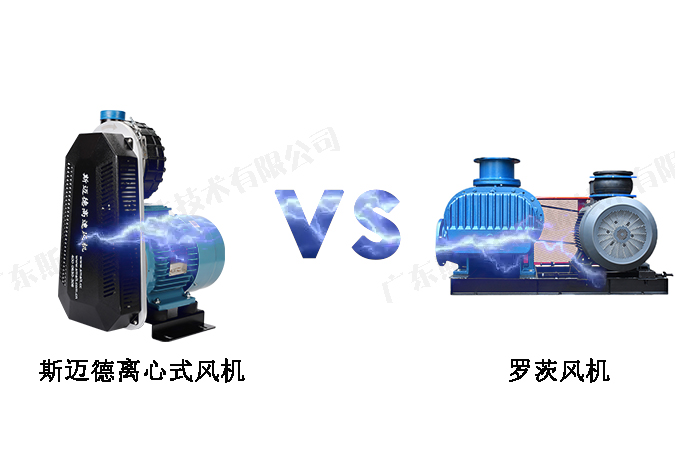& nbsp; Centrifugal fans and Roots fans, as two common industrial fans, have significant differences in working principles, accuracy, and noise and vibration. The following is a specific analysis of the differences between the two fans, allowing you to understand the differences and choose the more suitable product in practical applications

& nbsp; working principle
& nbsp; Centrifugal fan: The centrifugal force generated by the rotation of the impeller accelerates the gas, then decelerates and changes the flow direction, converting kinetic energy into potential energy (pressure). This type of fan belongs to a constant pressure fan, with the main parameter being air pressure.
& nbsp; Roots blower: It is a type of positive displacement fan that delivers air in proportion to the number of revolutions. It has two 8-shaped blades that push gas to the outlet through the compression of the blades, resulting in a high working pressure and belonging to a high-pressure fan.
& nbsp; working pressure
& nbsp; Centrifugal fan: With relatively low working pressure, it is suitable for situations that require high air volume.
& nbsp; Roots blower: With a relatively high exhaust pressure, it is suitable for situations that require high pressure but low air volume requirements.
& nbsp; Manufacturing accuracy
& nbsp; Centrifugal fan: relatively loose manufacturing accuracy.
& nbsp; Roots blower: requires high precision and strict assembly requirements.
& nbsp; Application scope
& nbsp; Centrifugal fan: widely used in the electronics industry, food industry, automotive industry, medical industry
& nbsp; Tire and rubber industry, animal husbandry, and wastewater industry, etc.
& nbsp; Roots blower: commonly used in fields such as sewage treatment, pneumatic conveying, combustion oxygen reduction machine, electroplating tank liquid mixing, aquaculture oxygenation, etc.
& nbsp; Noise and vibration
& nbsp; Centrifugal fan: The noise may be high because its working mode may cause airflow pulsation.
& nbsp; Roots blower: usually has low noise and operates smoothly without vibration.
& nbsp; Energy consumption and maintenance
& nbsp; Centrifugal fan: Energy consumption may be higher because its design focuses more on generating air volume rather than energy efficiency. Maintenance is relatively simple because the structure is sturdy and durable.
& nbsp; Roots blower: Due to its precise design and efficient sealing, it has low energy consumption. But it may require more frequent maintenance, especially under high load operation.
& nbsp; Special environmental adaptability
& nbsp; Centrifugal fan: It has certain adaptability to environments containing a certain amount of dust or particles, but a large amount of particulate dust may cause malfunctions.
& nbsp; Roots blower: stricter requirements for the environment, such as the inlet temperature of the medium not exceeding 40 degrees Celsius, and the content of particles in the medium not exceeding 100mg/m³ Wait.
& nbsp; In summary, centrifugal fans and Roots fans each have their unique advantages and applicable scenarios. When making a choice, it is necessary to comprehensively consider factors such as specific application requirements, work environment, and cost-effectiveness. For example, in situations where high wind capacity is required and pressure requirements are not high, centrifugal fans may be a better choice; In situations where high pressure and low air volume are required, Roots blowers are more suitable. At the same time, factors such as equipment noise, energy consumption, maintenance costs, and adaptability to special environments also need to be considered.







